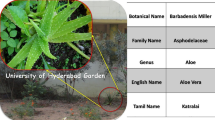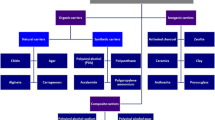Abstract
Sol-gel process is a rapid growing field in material chemistry. The sol-gel matrices (SGM) are basically porous wet-gels or xerogels obtained by the hydrolysis and condensation-polymerisation of metal and semimetal alkoxides, mainly SiO2 materials. The current study presents the uses of sol-gel glass matrix (SGM) that allow direct entrapment of biomolecules within and at surface, which can be utilized by microorganisms. This glass type is solid, transparent, porous and can be modulated to form a hydrophobic or hydrophilic surface. In view of all these beneficial characteristics of SGM, preliminary data is presented on biofilm formed on thin films of SGM doped with a fluorochrome (fluorescein diacetate). The esterase/lipase activity of E. coli CN 13 and K. oxytoca spp. biofilm grown on top of SGM thin film, doped with fluorescein diacetate, was detected at the level of a single cell by epifluorescence microscopy. In view of these preliminary results, sol-gel glass has a considerable potential as a variable matrix for single bacteria and biofilm investigation.
Similar content being viewed by others
References
D. Kamely, A. Chakrabarty, and S.E. Kornguth (Eds.), Biotechnology: Bridging Research and Applications (Kluwer, Boston, 1991).
D. Avnir, V.R. Kaufman, and R. Reisfeld, J. Non-Crystal. Sol. 74, 395 (1985).
C.J. Brinker and G.W. Scherer (Eds.), Sol-Gel Science: The Physics and Chemistry of Sol-Gel Processing (Academic Press Inc., San Diego, 1990).
N. Aharonson, M. Altstein, G. Avidan, D. Avnir, A. Bronshtein, A. Lewis, K. Lieberman, M. Ottolenghi, Y. Polevaya, and A. Turniansky, in Materials Research Society, Symposium Proceeding, Vol. 346: Better Ceramics Through Chemistry, VI, edited by C. Sanchez, M.N. McCartney, C.J. Brinker, and A. Cheetham (MRS, 1994), p. 519.
L.M. Ellerby, C.R. Nishida, S.A. Yamanaka, B. Dunn, J.S. Valentine, and J.I. Zink, Science 255, 1113 (1992).
H.H. Weetall, B. Robertson, D. Cullin, J. Brown, and M. Walch, Biochim. & Biophys. Acta 1142, 211 (1993).
D. Avnir, S. Braun, O. Lev, and M. Ottolenghi, Chem. of Mater. 6, 1605 (1994).
R. Armon, J. Starosvetzky, and M. Green, Lett. Appl. Microbiol. 20, 25 (1995).
C. Dosoretz, R. Armon, J. Starosvetzky, and N. Rothschild, J. Sol-Gel Sci. and Technol. 7, (1996).
D. Avnir, S. Braun, and M. Ottolenghi, in Am. Chem. Soc. Symp. Series XXX: Supramolecular Architecture in Two and Three Dimensions edited by T. Bein, (ACS, 1992).
S. Braun, S. Shtelzer, S. Rappoport, D. Avnir, and M. Ottolenghi, J. of Non-Crystal. Sol. 147/148, 739 (1992).
Author information
Authors and Affiliations
Rights and permissions
About this article
Cite this article
Armon, R., Starosvetzky, J. & Saad, I. Sol-Gel as Reaction Matrix for Bacterial Enzymatic Activity. Journal of Sol-Gel Science and Technology 19, 289–292 (2000). https://doi.org/10.1023/A:1008769212598
Issue Date:
DOI: https://doi.org/10.1023/A:1008769212598




